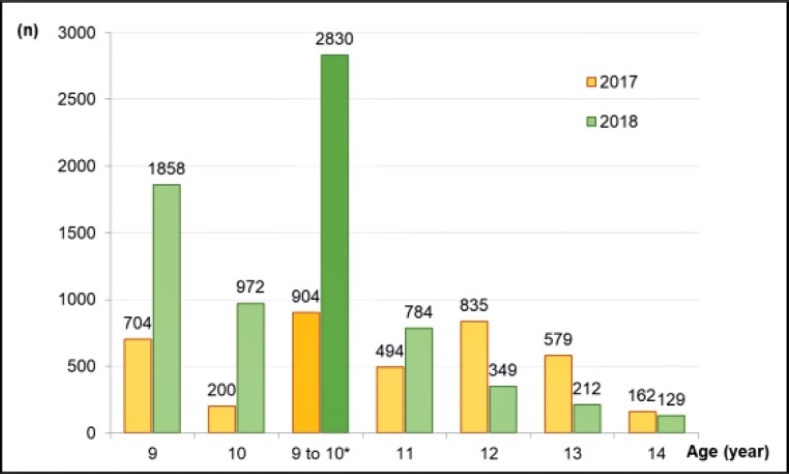You searched for:"Julio Cesar Teixeira"
We found (20) results for your search.Summary
Revista Brasileira de Ginecologia e Obstetrícia. 2000;22(2):65-70
DOI 10.1590/S0100-72032000000200002
Purpose: to evaluate conization by the loop electrosurgical excision procedure (LEEP) for the diagnosis and treatment of cervical intraepithelial neoplasms (CIN), the importance of the margins and follow-up of these women. Methods: 95 women who underwent conization by LEEP for CIN and microinvasive carcinoma from January 1996 to December 1997 were evaluated. For statistical analysis, we used the kappa agreement coefficient and the tendency test of Cochran Armitage. Results: among 63 cases who underwent colposcopically directed biopsy before the conization, the cone presented the same grade of lesion in 20 and no residual disease in 8. The cone lesion presented a higher grade in 24 cases and one of them was a microinvasive carcinoma. Among the 25 women who underwent the cone biopsy with a previous biopsy suggestive of cervicitis or CIN 1, 56% had CIN 2 or 3 in the cone. Among the 32 women without previous biopsy, 15 had CIN 2 or 3, and four had microinvasive carcinoma in the cone. Regarding the margins of the cone, 25 cases presented some grade of CIN in the endocervical margins and 2/10 who underwent a second procedure presented residual disease on histological analysis. Among the 70 women with free cone margins, 2/4 who underwent a second procedure had residual disease on histological analysis. Conclusion: conization by LEEP without previous directed biopsy depends on the experience of the colposcopist. The second resection after LEEP for the diagnosis and treatment of CIN depends not only on the presence of disease in the cone margins but also on the follow-up. A second histological analysis is recommended in cases with microinvasive carcinoma and glandular lesion and affected margins.
Summary
Revista Brasileira de Ginecologia e Obstetrícia. 2020;42(12):785-786
Summary
Revista Brasileira de Ginecologia e Obstetrícia. 2021;43(12):885-886
Summary
Revista Brasileira de Ginecologia e Obstetrícia. 2021;43(12):926-931
The present study assesses the implementation and the impact after 2 years of a school-based human papillomavirus (HPV) vaccination program in a Brazilian city.
A prospective study assessing the implementation of the program, offering quadrivalent HPV vaccine in two annual doses to girls and boys aged from 9 to 10 years old. The program was started in the city of Indaiatuba, state of São Paulo, Brazil, in 2018, and had authorization from the National Immunization Program. The number of HPV vaccine first doses applied and the coverage in 2018 was calculated and compared to the year 2017. There were described events that have influenced the results.
The program invited 4,878 children through schools (87.1% of the target population), and 7.5% refused vaccination. Several concurrent events required or competed for health professionals of the vaccination teams. The coverage of the first dose (between 9 and 10 years old) was 16.1% in 2017 and increased to 50.5% in 2018 (p < 0.0001). The first dose in all ages increased 78% in 2018 compared with 2017 (6,636/3,733). Competing demands over the program continued in 2019, and the first dose coverage dropped (26.9%). For 2020, a municipal law instituted school-based vaccination and the creation of dedicated teams for vaccination, and these strategies are waiting to be tested.
School-based annual HPV vaccination in children between 9 and 10 years old was feasible and increased vaccination coverage, regardless of gender, although the program was vulnerable to competing events.
